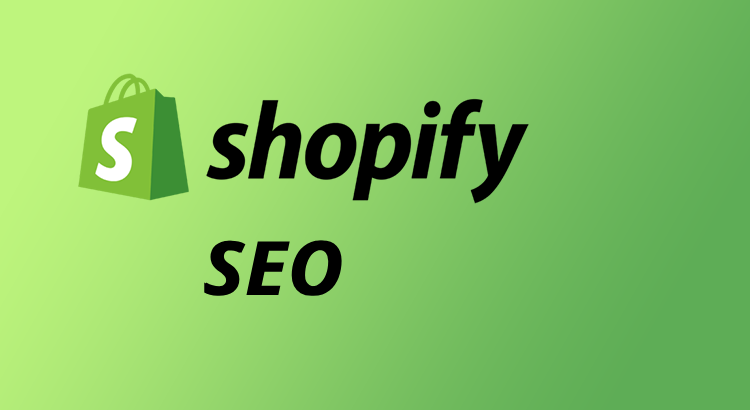Improving your store’s visibility is crucial for increasing sales. Effective Shopify SEO ensures better rankings on search engines like Google, helping you attract more visitors and convert them into customers. This guide will walk you through the key steps to enhance your ecommerce store’s ranking performance.
What is Shopify SEO?
It refers to the process of optimizing an online store built on the platform to improve its visibility in SERPs. By implementing effective website ranking strategies, businesses can attract more organic traffic, enhance user experience, and increase conversions.
Search engines consider various factors when determining rankings, including site structure, content relevance, and technical performance. Working with Shopify SEO experts ensures your store is well-optimized, helping it perform better in searches and reach the right audience.
12 Shopify SEO Tips
Here are 12 essential best practices to enhance your store’s performance in search rankings.
1. Build a Logical Site Structure
A well-structured website improves both user experience and visibility. It involves grouping related pages logically and ensuring smooth navigation through internal links.
An effective structure typically includes:
- A homepage
- Category pages for products
- Subcategory pages
- Product pages
Ensure every page has at least one internal link pointing to it. Pages without links, known as orphan pages, are difficult to find and may not get indexed properly.
2. Customize Your Store’s URL
By default, the platform assigns a random number to your store’s URL, which isn’t ideal for branding or memorability. Updating this to a custom domain makes your site look more professional and easier for customers to find.
To change your URL:
- Go to the admin dashboard and select Settings
- Click on Domains
- Enter your preferred store URL and select Add domain
For a fully branded web address like brand.com instead of brand.myshopify.com, purchase a custom domain through the Buy new domain option. A clear, memorable URL strengthens brand identity and improves direct traffic.
3. Enhance Page Speed
A fast-loading website enhances user experience and plays a key role in search rankings. Slow pages frustrate visitors and may lead to lost sales.
Improve your store’s speed by:
- Choosing the right image formats: Use JPG or PNG as recommended by the platform.
- Compressing images: Reduce file sizes to prevent slow loading times.
- Minimizing code: Streamline HTML, CSS, and JavaScript to eliminate unnecessary elements.
Optimizing performance ensures a smooth shopping experience and better visibility in SERPs.
4. Identify Relevant Keywords
Keywords are the words and phrases potential customers use to search for products online. Identifying and incorporating them into your content helps search engines understand its relevance, increasing website visibility.
Start by listing broad terms related to your product categories and refine them based on search volume, competition, and user intent.
Focus on terms that strike a balance between demand and difficulty while ensuring they align with what shoppers are looking for. A well-optimized keyword strategy makes it easier for search engines to connect your store with the right audience.
5. Implement Topic Clusters
A topic cluster is a collection of related webpages that cover different aspects of a subject, helping both users and search engines recognize your expertise.
There are two main components in a topic cluster:
- A pillar page that addresses a broad topic (e.g., “keyword research”)
- Cluster pages that cover specific aspects of the topic (e.g., “long-tail keywords,” “search intent”)
All pages should be interlinked to indicate their relationship and depth of coverage. This structure enhances authority, improves navigation, and increases the chances of ranking higher in SERPs.
6. Publish High-Quality Blog Content
Creating blog content around key topics, especially those with informational intent, helps attract visitors and improve visibility.
To ensure high-quality content:
- Provide unique, valuable insights that stand out from existing articles, enhancing user experience and search rankings.
- Use images to break up text and visually explain concepts.
- Add internal links to connect related pages and help search engines understand site structure.
- Mention your products naturally when relevant, highlighting their benefits.
- Include clear calls to action (CTAs) to guide readers toward the next steps, such as exploring product pages or making a purchase.
7. Optimize Product & Category Pages
Enhancing product and category pages improves visibility and user experience. Use relevant keywords and internal links to help Google understand and rank your content.
Your product pages should include:
- A title incorporating your primary keyword
- A description with target and secondary keywords
- High-quality images showcasing the product
- Links to product variations and related items
Consider adding extra details such as shipping information, customer reviews, and FAQs to provide more value and encourage conversions.
8. Refine URLs, Titles, Headings & Meta Descriptions
Every page has a URL slug, title tag, H1 tag, and meta description that should be optimized for SEO.
- URL slug: The last part of your page’s URL
- Title tag: Specifies the webpage title and may appear in SERPs
- H1 tag: Defines the main heading on the webpage
- Meta description: Provides a summary of the page and may appear in SERPs
Your URL slug should be clear and keyword-rich. Compare these options:
- https://www.yourstore.com/collection/item-42252
- https://www.yourstore.com/collection/blue-winter-jacket
The second option is better because it’s descriptive and includes keywords.
Follow these best practices for H1 tags and title tags:
- Align title tags and H1 tags: Keep them similar to avoid user confusion.
- Use your primary keyword: Helps search engines understand your content.
- Avoid keyword stuffing: Overloading keywords can look spammy.
Meta descriptions, when displayed in search results, are often the second thing users notice.
A compelling, well-crafted meta description can drive clicks to your page over competitors.
To optimize for clicks, include relevant keywords, add a CTA, and keep it within 105 characters to prevent truncation.
9. Use Descriptive Alt Text
Alt text is an HTML attribute that provides a text description of images on your page. It helps Google understand your visuals and improves accessibility for users who rely on screen readers. If an image fails to load due to a slow connection, alt text appears in its place.
Follow these best practices when writing alt text:
- Avoid alt text for decorative images: If an image doesn’t add value, leaving the alt text blank won’t impact user experience.
- Be clear and concise: Describe the image in a way that helps users visualize it without seeing it.
- Use keywords strategically: Including relevant keywords can enhance your image’s visibility in
10. Implement Structured Data
Structured data (schema markup) is code that helps Google better understand your page content. It can also generate rich results, making your Shopify store more noticeable in search rankings.
Key structured data types for Shopify sites include:
- Organization schema
- CollectionPage schema
- BreadcrumbList schema
- Product schema
- Article schema
11. Build High-Quality Backlinks
Backlinks—links from other websites to yours—are crucial for SEO. They signal trust and authority, helping your site rank higher in SERPs.
Ways to earn backlinks:
- Create high-quality content that naturally attracts links
- Respond to journalists’ requests for expert insights
You can also take a proactive approach by reaching out to relevant sites and requesting links.
12. Monitor Performance & Make Adjustments
Shopify SEO apps help streamline store optimization by automating tasks like meta tag management, image optimization, and schema markup implementation. These apps save time, improve your store’s visibility, and ensure your pages follow SEO best practices.
From keyword research tools to automated link-building solutions, the right apps can enhance your Shopify store’s performance with minimal effort.
See more SEO plugins suitable for your Shopify-based eCommerce site.
Conclusion
Enhancing your store’s visibility requires ongoing efforts, from refining site structure to improving content and acquiring backlinks. Implementing these strategies will help your ecommerce platform rank higher, attract more visitors, and ultimately drive more sales.


